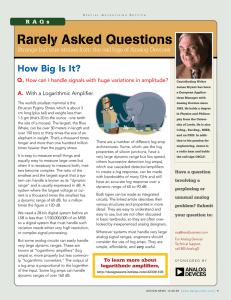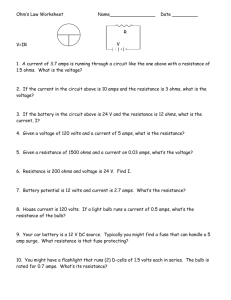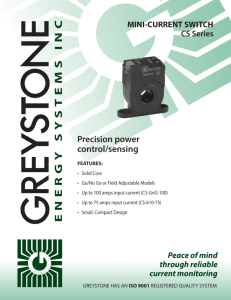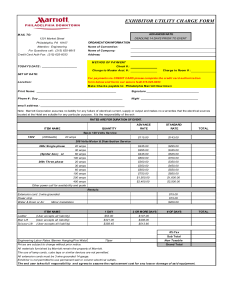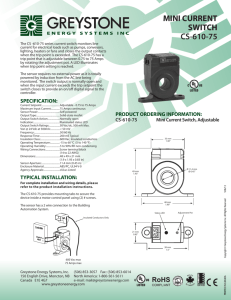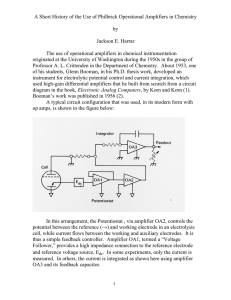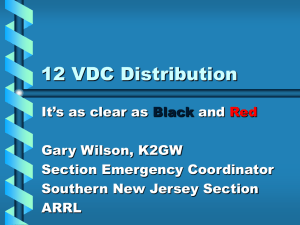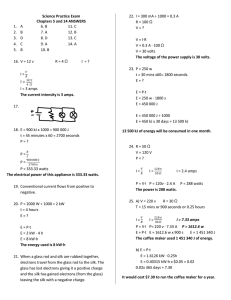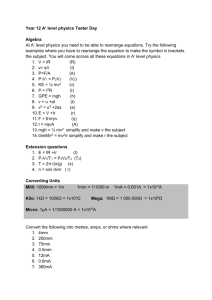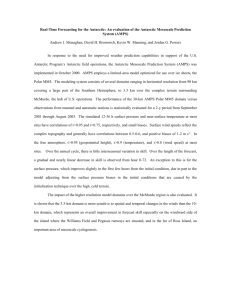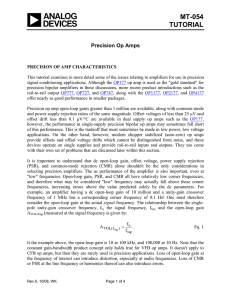Dual Op Amps and Double Agents: they say they are…
advertisement
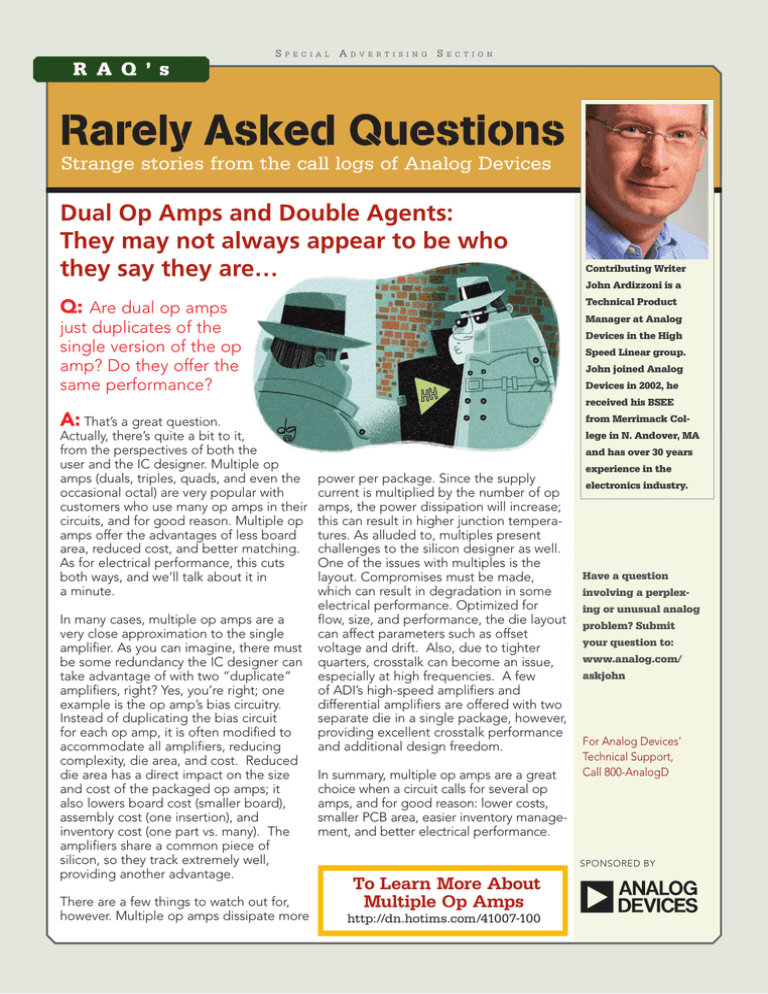
R A Q ’ s S p e c i a l A d v e r t i s i n g S e c t i o n Strange stories from the call logs of Analog Devices Dual Op Amps and Double Agents: They may not always appear to be who they say they are… Q: Are dual op amps Manager at Analog Devices in the High Speed Linear group. John joined Analog Devices in 2002, he received his BSEE A: That’s a great question. In many cases, multiple op amps are a very close approximation to the single amplifier. As you can imagine, there must be some redundancy the IC designer can take advantage of with two “duplicate” amplifiers, right? Yes, you’re right; one example is the op amp’s bias circuitry. Instead of duplicating the bias circuit for each op amp, it is often modified to accommodate all amplifiers, reducing complexity, die area, and cost. Reduced die area has a direct impact on the size and cost of the packaged op amps; it also lowers board cost (smaller board), assembly cost (one insertion), and inventory cost (one part vs. many). The amplifiers share a common piece of silicon, so they track extremely well, providing another advantage. There are a few things to watch out for, however. Multiple op amps dissipate more John Ardizzoni is a Technical Product just duplicates of the single version of the op amp? Do they offer the same performance? Actually, there’s quite a bit to it, from the perspectives of both the user and the IC designer. Multiple op amps (duals, triples, quads, and even the occasional octal) are very popular with customers who use many op amps in their circuits, and for good reason. Multiple op amps offer the advantages of less board area, reduced cost, and better matching. As for electrical performance, this cuts both ways, and we’ll talk about it in a minute. Contributing Writer from Merrimack College in N. Andover, MA and has over 30 years power per package. Since the supply current is multiplied by the number of op amps, the power dissipation will increase; this can result in higher junction temperatures. As alluded to, multiples present challenges to the silicon designer as well. One of the issues with multiples is the layout. Compromises must be made, which can result in degradation in some electrical performance. Optimized for flow, size, and performance, the die layout can affect parameters such as offset voltage and drift. Also, due to tighter quarters, crosstalk can become an issue, especially at high frequencies. A few of ADI’s high-speed amplifiers and differential amplifiers are offered with two separate die in a single package, however, providing excellent crosstalk performance and additional design freedom. In summary, multiple op amps are a great choice when a circuit calls for several op amps, and for good reason: lower costs, smaller PCB area, easier inventory management, and better electrical performance. experience in the electronics industry. Have a question involving a perplexing or unusual analog problem? Submit your question to: www.analog.com/ askjohn For Analog Devices’ Technical Support, Call 800-AnalogD SPONSORED BY To Learn More About Multiple Op Amps http://dn.hotims.com/41007-100
